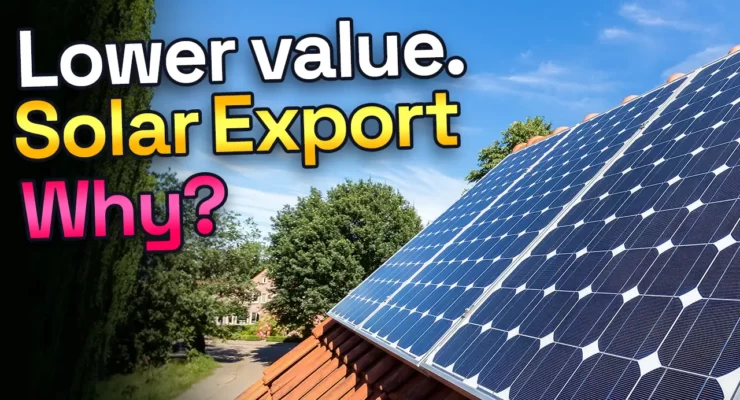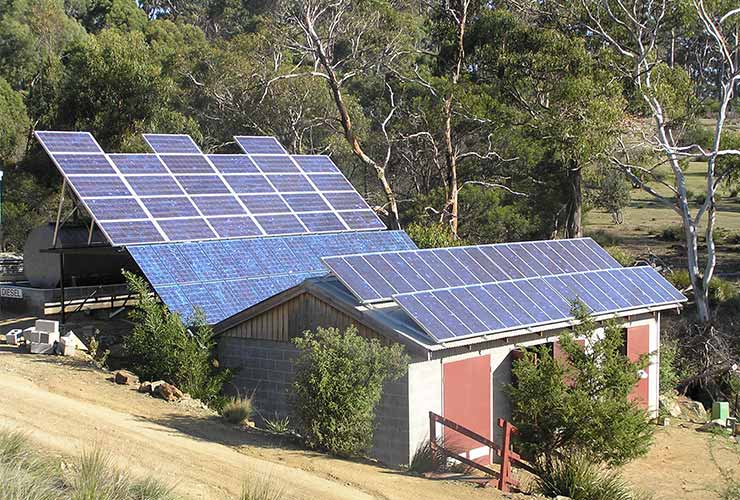
Fast read
The long-term effect of lower feed-in tariff (FiT) rates in Australia concerns solar panel owners. Initially, when the solar industry grew, FiTs offered lucrative returns, but as solar uptake increased and costs decreased, FiTs reduced over the years. As electricity costs have gone up, this has offset the loss of income via FIT and the solar ROI is still very advantageous.
Factors contributing to this decline include the profiteering by energy retailers, changes in government policies, technical limitations of the energy grid, and an oversupply of electricity from renewable sources in the middle of the day.
Retailers now pay between 5c to 10c per kWh for exported solar electricity, so the way to fight back is to get a battery or use the solar electricity in the house to make hot water or pre-cool the house via air-conditioning on a timer.
Despite decreasing FiTs, solar systems still offer significant savings through renewable energy.
Despite decreasing FiTs, solar systems still offer significant savings through renewable energy.
What will be the long-term effect of decreasing solar feed-in tariff (FiT) rates?
Australia is known for its abundant sunshine, and as a result, the solar industry has significantly grown in recent years. Many homeowners and businesses have installed solar systems on their roofs, and they can generate more electricity than they consume. This excess can then be sold back to the energy grid. This is known as the solar feed-in tariff, however, nowadays solar feed-in tariffs are decreasing causing concern among solar system owners.
Solar Feed-in tariffs
When the Government first supported and encouraged the installation of residential solar systems, they introduced regulated premium solar feed-in-tariffs (FiTs) for any electricity that homeowners sent back to the grid.
While these slightly varied across the country, at their peaks, they were a 1-time payment equivalent to what you would buy electricity for (20c to 30c per kWh) in the Northern Territory, 44 cents in Queensland up to 60c per kWh in New South Wales.

Electricity price factors
The first thing to look at is the breakdown of electricity prices for residential and small commercial customers. While you might pay 30 to 40c per kWh for the electricity you buy, this includes several cost factors.
The wholesale cost of the actual electricity, the distribution and transmission costs to use the infrastructure to get the electricity to your home, and retail operating costs and some profit are all contributing factors to the final price. When the electricity pays for your electricity, and you are selling it to someone else, the price will need to accommodate these factors.
Changes in government policy
Since the initial implementation of solar feed-in tariffs, there have been various changes in government policies. The various State Governments and the Federal Government over the past 15-20 years have eliminated and reduced some subsidies for solar energy. These changes could have made it more expensive for businesses and homeowners to install solar systems, except that solar panels and inverters have become much cheaper at the same time. This is because production volumes increase sharply and China has perfected the fully automated process of solar system manufacturing.
So overall, despite a reduction in Government support, solar PV system costs have decreased, as panel price reductions were bigger than the reduction in government rebates. As a result, the growth of the solar industry has increased, and the average size of Australian solar systems has grown from 3kW in 2014 to 6.6kW in 2019, then 8kW in 2021 and now 10 to 14 kW. This system size increase has also increased the amount of exported solar during the day.
Technical limitations
Initially, the energy grid in Australia was designed to transport electricity from a central source, the power stations, to homes and businesses. As a result, the grid is much more complex, which can lead to issues in managing the electrical supply, including grid instability and, in rare cases, blackouts.
This also implies that investment in the grid infrastructure has significantly increased in the last decade, and more is necessary as the switch to EVs becomes mainstream. So energy retailers have to make solid profits to be able to invest in these necessary upgrades.
The wholesale price of electricity
So in the eyes of the energy retailer the electricity you send back to the grid has the same value as the wholesale price, which is the money the energy retailer pays to the owners of power stations for each kWh.
Wholesale of electricity price explained
The energy market updates prices every 5 minutes, and during very hot days for example, when many air-conditioners run and demand is at its peak, the wholesale price can increase by factors of 100 or even 1000 in short periods. But most of the time, wholesale prices for one kW/h fluctuate between 4 and 15 cents. That’s why the solar feed-in tariff amount per kW/h paid to you by the energy company matches these amounts.
As a general rule, in Australia, the wholesale price of electricity has decreased over the past few years (till the war in Ukraine made it spike).
The key contributor to the solar feed-in tariff decrease has been the growth of renewable energy generation. An increase in renewable energy, especially during sunlight hours, has led to the highest supply of electricity in the middle of the day, while daytime electricity demand with the reduction in manufacturing has dropped. As a result, midday electricity’s value has dropped, and energy retailers are paying a lower fair price for the exported electricity.
An oversupply of electricity
For Q1 2023, the average price of electricity was $63 per MWh (megawatt hour), which is 6.4c per kWh. The increased uptake of EVs will significantly raise daytime demand for electricity (for charging), thus driving a significant rise in the price of the solar feed-in tariff cents per kWh over the next few short years.

What should you do?
Unfortunately, it is getting to the point where electricity sent to the grid is worth little.
The first is to purchase a battery storage system. This will allow you to store your excess electricity for yourself to use later. By storing the excess, you increase the value of the overall electricity you produce throughout the day, not just what you use.
Another option when you have the battery is to join a virtual power plant (VPP) program. VPPs are groups of small-scale solar and battery systems treated and managed as a singular system. If the grid needs more power, the VPP can provide emergency electricity.
Alternatively, you can use the excess solar to make hot water by sending it into your standard hot water tank or utilise a heat pump to make hot water with the excess solar.
Solar is still extremely worth it even though the solar feed-in tariff is decreasing
Even though solar feed-in tariffs are decreasing, the value and financial benefits of on-grid and off-grid systems are still high. You will still save significant amounts on your electricity bill through renewable energy. Because of the high electricity prices, having your energy usage during the day supported by your own rooftop power station will make a significant positive impact.